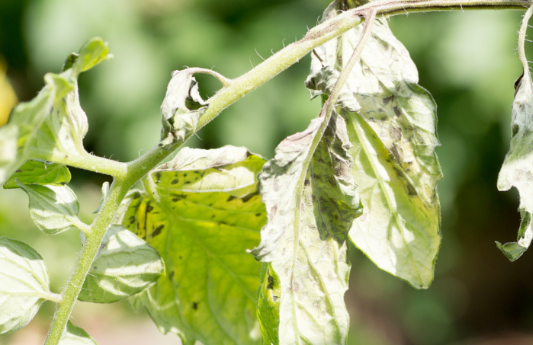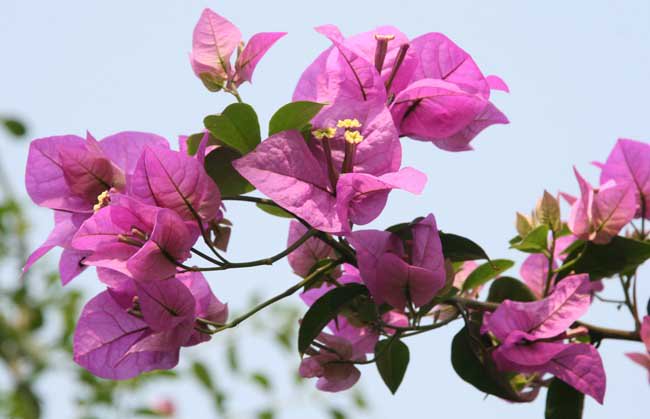Propagation methods of Clematis roxburghii
Anoectochilus roxburghii as a valuable traditional Chinese medicine, its wild resources are scarce and in great demand, so the market price is high and has excellent economic benefits. Many people are attracted by its economic benefits and carry out artificial planting, but when planting, we must first understand its breeding methods. Let's take a look at the breeding methods of Clematis with Xiaobian.

1. Sowing and reproduction
Most of the traditional propagation methods of plants are sowing and reproduction, and Clematis is no exception, but its seeds are extremely rare, there is only one undeveloped germ, the germination rate is very low, and the seed coat has poor water absorption, so it can not be sowed by conventional methods. The seeds with uncracked seed coat should be selected when sowing, after the surface is disinfected and sterilized with alcohol, soak it with sodium chlorate solution for 5-10 minutes, rinse it with clean water for many times, put it in a culture bottle, put it in a dark culture room, keep the temperature 25 degrees Celsius, germinate and then move under light to form a bulb, which can be planted and transplanted.
2. Ramet propagation
The pseudocorm of Clematis can also be used as propagation, and it can be propagated in ramets, which are generally carried out in spring and autumn, when the temperature and humidity are suitable and the survival rate is high. Generally, the ramets are planted every three years, and those with strong growth and dense pseudocorms can be propagated, and at least 5 or more pseudocorms should be linked together after planting. Irrigation should be reduced before ramet, and the soil rich in humus should be suitable, and the planting depth should be just buried with pseudo-corm. After planting, it should be watered once, placed in a cool place for about half a month to keep the soil moist, and reduce watering.
3. Tissue culture
In addition to the traditional methods of reproduction, there is also a tissue culture technology using science and technology. At present, the dry Clematis on the market is cultivated through tissue cultivation. First of all, it allocates the culture medium according to the specific cultivation, carries on the packaging and disinfection, and then cuts the organs of appropriate length on the mother plant in the aseptic environment and inoculates in the culture medium. The temperature of the culture room is between 20 and 28 degrees, and the light intensity is mainly between 3000 and 4000 lux. At the same time, under the action of cytokinin and auxin in the culture matrix, the plant organs differentiate and cluster. After being cultivated for a period of time, the secondary band can be multiplied, and when the bud grows to a certain excess, it can be transplanted.
The above is the introduction of Anoectochilus roxburghii breeding methods, hope to help you, want to know more related knowledge, please pay attention to us.
- Prev

If the plant is sick, it is also contagious!
Recently, Xiaozhi will see a lot of friends say to me that the plant I raised is sick, what is the reason and so on. Plants are generally physiological and pathological when they are sick. Just like people, they need to prescribe the right medicine to the case. If you are misdiagnosed, the plant will not survive in the end.
- Next

Co-evolution of animals and plants in tropical rain forests the way plants spread seeds
All species on earth have experienced the process of emergence, reproduction and evolution in the past 3.5 billion years, and some of them interact with each other in the process of evolution. it is this interaction that we see today that there are not only independent species in nature.
Related
- Fuxing push coffee new agricultural production and marketing class: lack of small-scale processing plants
- Jujube rice field leisure farm deep ploughing Yilan for five years to create a space for organic food and play
- Nongyu Farm-A trial of organic papaya for brave women with advanced technology
- Four points for attention in the prevention and control of diseases and insect pests of edible fungi
- How to add nutrient solution to Edible Fungi
- Is there any good way to control edible fungus mites?
- Open Inoculation Technology of Edible Fungi
- Is there any clever way to use fertilizer for edible fungus in winter?
- What agents are used to kill the pathogens of edible fungi in the mushroom shed?
- Rapid drying of Edible Fungi

